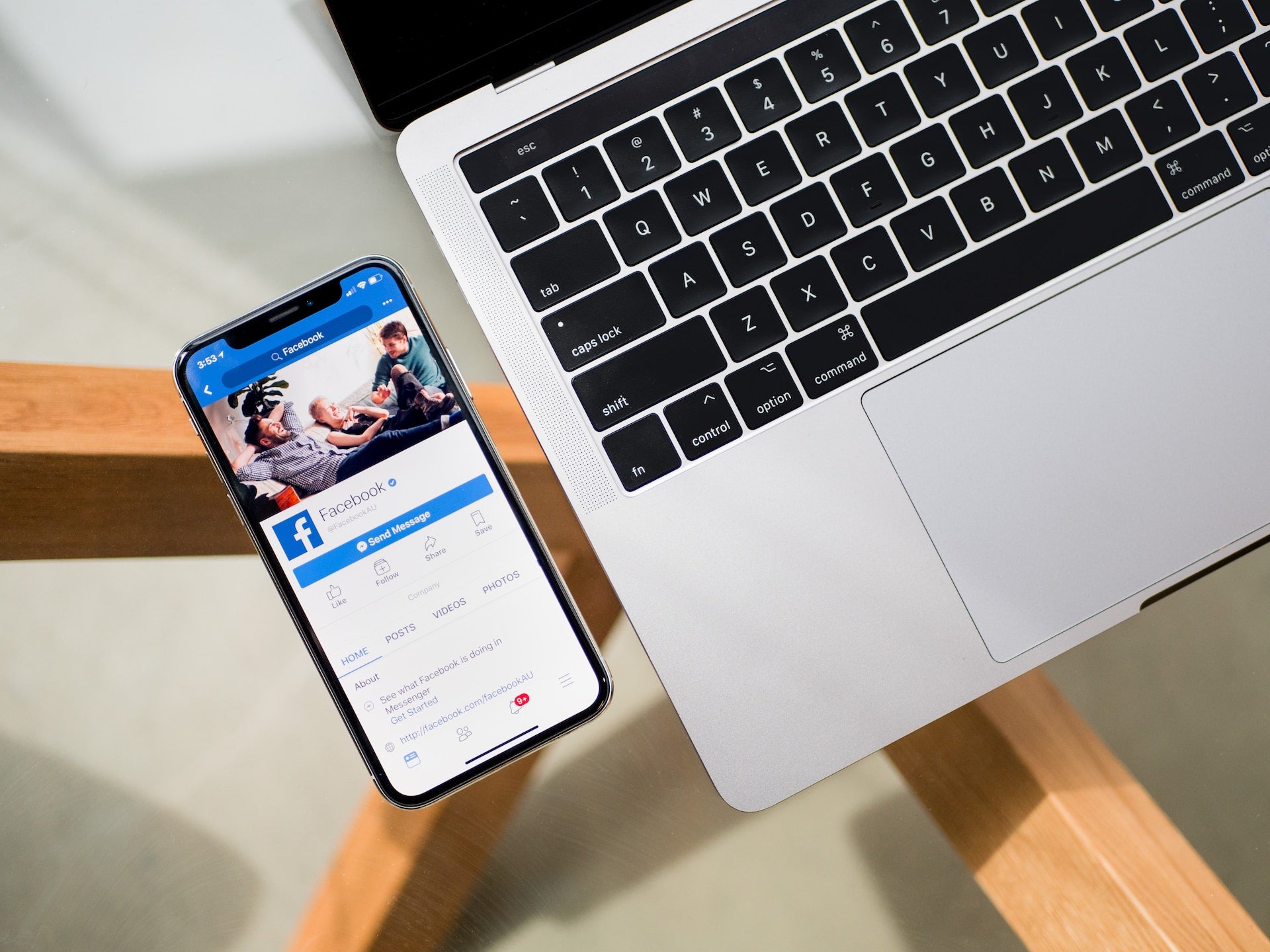Businesses are constantly seeking innovative ways to generate leads and convert prospects into loyal customers. With the proliferation of social media and advanced analytics tools, the opportunities for effective lead generation have never been greater.
By leveraging social media platforms and optimizing websites for maximum conversions, businesses can reach a wider audience and attract high-quality leads.
Additionally, implementing robust lead nurturing techniques and utilizing data-driven insights for tracking and analysis can significantly enhance the effectiveness of lead generation efforts.
This comprehensive approach not only helps in acquiring new leads but also ensures sustained engagement and conversion, ultimately driving business growth.
Understanding Lead Generation and Its Importance for Business Growth
Lead generation is the cornerstone of any successful business strategy. In essence, it’s the process of attracting and converting strangers and prospects into someone who has indicated interest in your company's product or service.
This isn't just about collecting names and email addresses; it’s about nurturing potential clients and guiding them through the sales funnel until they are ready to make a purchase.
Effective lead generation can transform your business. According to Forbes, companies that excel at lead nurturing generate 50% more sales-ready leads at 33% lower cost. This statistic alone underscores the importance of mastering lead generation techniques.
Businesses today face the challenge of a digitally-savvy consumer base that craves personalized and seamless interactions.
As a result, the shift from traditional outbound methods, such as cold calling and mass emails, to more personalized inbound approaches is inevitable. This transformation allows businesses to create meaningful connections that are not only more effective but also more cost-efficient.

Key Components and Strategies for Successful Lead Generation
Tailoring Your Content
One of the most effective strategies for lead generation is content personalization. Crafting targeted messages that resonate with your audience’s interests and needs is essential. Tailored content establishes authority in your field and connects with your audience on a personal level.
By focusing on their pain points and offering valuable solutions, you can build trust and credibility.
As highlighted in the SEO lead generation expert guide, understanding your audience’s pain points is crucial. Integrating powerful calls-to-action (CTAs), optimizing signup forms, and creating compelling offers can significantly enhance your lead nurturing efforts.
Relevant and engaging content not only attracts leads but also helps in nurturing relationships over time, increasing the chances of conversion.
Using Lead Scoring
Lead scoring is a strategic way to prioritize your outreach efforts. By evaluating each lead’s position in the buyer’s journey and considering factors like demographics and behavior, you can determine which leads are ready to move to the next stage. This method ensures that your marketing spend is targeted effectively, increasing your return on investment (ROI).
Lead scoring also allows you to identify potential issues or bottlenecks in the lead management process. Addressing these issues promptly can prevent them from becoming significant problems, ensuring a smoother and more efficient lead conversion process.
Personalizing the Lead Capture Process
Personalization in the lead capture process can significantly improve conversion rates. By customizing the experience for each lead, you build trust and show that you understand their needs. This differentiation sets you apart from competitors who may still be using generic processes.
Personalized lead capture processes involve more than just using a person’s name. It includes understanding their preferences, previous interactions, and providing tailored solutions that meet their specific needs.
This approach not only enhances the user experience but also increases the likelihood of conversion.
Setting a Service-Level Agreement for Routing Leads
Establishing a service-level agreement (SLA) for lead routing is essential for maintaining an efficient lead generation process. An SLA defines the procedures and targets for managing incoming leads and moving them through the sales funnel. It ensures that every lead is followed up within a set timeframe and meets specific criteria before being routed to sales.
An effective SLA includes the definition and scoring of marketing-qualified leads (MQLs) and sales-qualified leads (SQLs), criteria for routing leads to sales, and the timeframe within which leads should be contacted. This clarity helps avoid confusion and miscommunication, ultimately enhancing the lead management process.
Making Data Hygiene a Priority
Data hygiene is crucial for accurate lead management. Ensuring that your data is clean, accurate, and up-to-date prevents bad decisions and wasted resources. Regularly cleaning and updating your data ensures that your communication is relevant and targeted to the right people.
Accurate data improves the effectiveness of your lead nurturing efforts, making it easier to tailor messages and offers to meet the specific needs of your leads. This precision enhances the overall success of your lead generation strategy.
Leveraging Digital Business Cards
In the digital age, traditional paper business cards are becoming obsolete. Digital business cards offer a more efficient and engaging way to share contact information and manage leads. Popl digital business cards, for example, provide seamless sharing of contact details and social media profiles with just a tap.
Digital business cards not only reduce waste but also ensure that your information is easily accessible and shareable. They integrate with CRM systems, streamlining the lead management process and ensuring that no potential lead is overlooked.
Popl’s Lead Capture Mode, including badge scanner feature, simplifies capturing leads at networking events or conferences, transforming cold calls into warm leads.
Incorporating digital business cards into your lead generation strategy can enhance connectivity, improve follow-up efficiency, and ultimately increase conversion rates.
Identifying and Targeting the Right Audience with Buyer Personas
Creating buyer personas is a fundamental step in any successful lead generation strategy. Buyer personas are semi-fictional profiles of your ideal customers, based on market research and real data about your existing customers.
They help you understand your target audience's needs, preferences, and behaviors, allowing you to tailor your marketing efforts more effectively.
Designing Buyer Personas
To design effective buyer personas, gather data from various sources, including customer surveys, interviews, and insights from your sales team. Look at customer demographics, psychographics, behavior patterns, and pain points. This information helps create a detailed picture of your ideal customer.
For example, if you run a digital business card service, your buyer personas might include:
- Tech-Savvy Entrepreneurs: Individuals who embrace new technology and are always on the lookout for innovative tools to streamline their business operations.
- Corporate Professionals: Executives and managers who attend numerous networking events and conferences, seeking efficient ways to manage contacts and leads.
- Freelancers and Consultants: Independent professionals who need to make strong first impressions and maintain professional connections effortlessly.
Once you have your personas, use them to inform your lead capture efforts. Align your lead capture forms, content, and outreach strategies with the personas to attract high-value leads. This targeted approach ensures that your marketing messages resonate with your audience, increasing the likelihood of conversion.
Personalizing Content for Buyer Personas
Tailoring your content to match the interests and needs of your buyer personas is crucial.
For instance, if you're targeting tech-savvy entrepreneurs, create blog posts and resources that highlight the latest technological advancements in digital business cards and lead management.
On the other hand, corporate professionals might appreciate case studies showcasing how your service has streamlined networking processes for large organizations.
Creating Compelling Lead Magnets and Offers to Attract Prospects
Lead magnets are valuable resources or incentives offered to prospects in exchange for their contact information. They play a pivotal role in attracting and converting leads. The key to creating compelling lead magnets is to ensure they provide genuine value to your target audience.
Types of Lead Magnets
-
Ebooks and Guides: Comprehensive resources that address common challenges faced by your audience. For example, an ebook on "Maximizing Networking Efficiency with Digital Business Cards" can attract corporate professionals and entrepreneurs alike.
-
Webinars and Online Workshops: Interactive sessions where you share insights, tips, and best practices related to your industry. Hosting a webinar on "Lead Generation Strategies for the Digital Age" can draw a diverse audience interested in modern networking solutions.
-
Templates and Checklists: Practical tools that your audience can use immediately. A "Digital Business Card Design Template" or a "Networking Event Checklist" can be highly appealing to busy professionals.
-
Free Trials and Demos: Offering a limited-time free trial or demo of your digital business card service allows prospects to experience the benefits firsthand. This can be particularly effective for converting hesitant leads into paying customers.
Crafting Irresistible Offers
To make your lead magnets even more enticing, consider the following strategies:
- Highlight Benefits: Clearly communicate the value and benefits of your lead magnet. Explain how it addresses specific pain points and offers practical solutions.
- Use Compelling CTAs: Craft strong calls-to-action (CTAs) that encourage prospects to take the next step. Phrases like "Download Now," "Sign Up for Free," or "Get Your Exclusive Access" can prompt immediate action.
- Leverage Scarcity: Create a sense of urgency by emphasizing limited availability or time-sensitive offers. For instance, "Join our webinar now – only 100 spots available!" can drive quick sign-ups.
- Offer Exclusive Content: Make your lead magnets feel exclusive and valuable. Mention that the content is not available elsewhere and is designed to provide unique insights.
Promoting Your Lead Magnets
Effective promotion is essential to maximize the reach of your lead magnets. Utilize multiple channels to ensure your offers reach your target audience:
- Email Marketing: Send targeted email campaigns to your existing subscribers, highlighting the value of your lead magnets.
- Social Media: Share engaging posts on platforms like LinkedIn, Facebook, and Twitter, directing followers to your lead magnets.
- Content Marketing: Incorporate CTAs for your lead magnets within your blog posts, articles, and website content.
- Paid Advertising: Invest in paid ads on platforms like Google Ads or social media to reach a broader audience and drive traffic to your lead magnets.
Real-Life Example: Sogno di Vino
An excellent example of creative lead magnet usage comes from the Italian restaurant Sogno di Vino in Washington. They added three extra lines to their paper receipts, informing customers about the benefits of joining their mailing list. By offering wine tastings as a lead magnet, they used an unconventional channel to capture leads effectively.

Optimizing Landing Pages and Websites for Maximum Conversions
A well-optimized landing page is crucial for converting visitors into leads. It's the first impression potential customers get of your service, and it needs to be compelling enough to capture their interest and make them take action.
Here's how to optimize your landing pages and websites for maximum conversions.
Clear and Compelling Headlines
Your headline is the first thing visitors see. It should be clear, concise, and compelling. It needs to communicate the primary benefit of your offering within seconds.
For instance, if you're offering a free trial of your digital business card service, your headline could be, "Transform Your Networking with a Free Trial of Our Digital Business Card Service."
Engaging Visuals and Design
Visual appeal plays a significant role in retaining visitors on your landing page. Use high-quality images, videos, and graphics that resonate with your audience.
For example, a short video demonstrating how easy it is to use your digital business card can capture attention and drive conversions.
Strong Calls-to-Action (CTAs)
Your CTA is a critical component of your landing page. It should stand out and clearly guide the visitor on what to do next.
Use action-oriented language like "Get Started Now," "Download Your Free Guide," or "Sign Up for a Free Trial." Ensure that your CTA buttons are prominently placed and easy to find.
Social Proof and Testimonials
Including testimonials, reviews, and case studies can significantly boost your credibility. Social proof reassures visitors that others have benefited from your service.
For instance, a testimonial from a satisfied client who used your digital business card service to streamline their networking efforts can be very persuasive.
Mobile Optimization
With more people accessing websites via mobile devices, ensuring your landing page is mobile-friendly is essential. Responsive design ensures that your page looks and functions well on all devices, providing a seamless experience for all visitors.
Minimize Distractions
Keep your landing page focused on the primary goal – conversion. Minimize distractions by limiting navigation options, removing unnecessary content, and ensuring the layout is clean and straightforward. This helps keep the visitor's attention on your CTA.
A/B Testing
Continuously test different elements of your landing page to see what works best. A/B testing allows you to compare two versions of a page to determine which one performs better. Test various headlines, images, CTAs, and layouts to optimize for maximum conversions.
Effective Lead Nurturing Techniques and Email Marketing Campaigns
Lead nurturing is the process of developing relationships with your prospects at every stage of the sales funnel. Effective lead nurturing can significantly increase the likelihood of converting leads into customers. Email marketing is a powerful tool in this process.
Here's how to execute successful lead nurturing techniques and email marketing campaigns.
Segmenting Your Email List
Segmentation is crucial for personalized email marketing. Divide your email list into different segments based on demographics, behavior, and position in the buyer’s journey. This allows you to tailor your messages to the specific needs and interests of each segment.
For example, if you have a segment of tech-savvy entrepreneurs, you could send them emails about the latest features of your digital business card service and how it can enhance their networking efforts.
Personalized Email Content
Personalization goes beyond using the recipient's name. It involves creating content that is relevant to the recipient's interests and needs. According to a study by HubSpot, personalized emails improve click-through rates by 14% and conversion rates by 10%. Use the data you have about your leads to craft personalized messages that resonate with them.
Educational Content
Provide valuable educational content that helps your leads solve their problems and understand the benefits of your service. This could include blog posts, ebooks, webinars, and how-to guides.
For instance, you could send a series of emails with tips on how to maximize the use of digital business cards for effective networking.
Automated Drip Campaigns
Automation can save time and ensure consistent communication with your leads. Drip campaigns are automated sets of emails sent based on specific triggers or schedules. They are designed to nurture leads by providing relevant information and moving them closer to conversion.
For example, after a lead downloads a guide, they could receive a follow-up email series introducing them to your digital business card service and its benefits.
Engaging Subject Lines
The subject line is the first thing your recipients see, and it significantly impacts open rates. Craft engaging and compelling subject lines that encourage recipients to open your emails. According to Campaign Monitor, emails with personalized subject lines are 26% more likely to be opened.
Clear and Actionable CTAs
Every email should have a clear and actionable CTA that guides the recipient on what to do next. Whether it's signing up for a webinar, downloading a resource, or starting a free trial, make sure the CTA stands out and is easy to follow.
Analyzing and Optimizing Email Performance
Regularly analyze the performance of your email campaigns. Track key metrics like open rates, click-through rates, and conversion rates.
Use this data to identify what's working and what needs improvement. A/B testing can also be valuable here, allowing you to test different email elements to optimize for better results.
Real-Life Example: Netflix
Netflix excels in email personalization and segmentation. By analyzing user behavior and preferences, Netflix sends highly personalized emails with recommendations tailored to individual tastes. This approach keeps users engaged and encourages them to explore more content, leading to increased retention and satisfaction.

Leveraging Social Media for Lead Generation
Social media platforms have revolutionized the way businesses generate leads. With billions of active users across various platforms, social media offers unparalleled opportunities to reach and engage potential customers.
Here’s how to effectively leverage social media for lead generation.
Choosing the Right Platforms
Not all social media platforms are created equal, and different platforms cater to different demographics and industries. Research and identify where your target audience spends their time.
For instance, LinkedIn is highly effective for B2B lead generation, while Instagram and Facebook may be better suited for B2C interactions.
According to a study by HubSpot, LinkedIn is 277% more effective for lead generation than other social media platforms. This statistic highlights the importance of choosing the right platform based on your target audience.
Creating Valuable Content
Content is king on social media. Create and share valuable, engaging, and relevant content that addresses the needs and interests of your audience. This could include blog posts, infographics, videos, and case studies. Make sure your content is shareable to increase its reach.
For example, you can use an AI video generator to create engaging videos that showcase the benefits of your digital business card services. Videos are particularly effective on social media, as they capture attention and can convey complex information quickly.
Utilizing Social Media Ads
Paid advertising on social media platforms can significantly boost your lead generation efforts. Social media ads allow you to target specific demographics, interests, and behaviors, ensuring your content reaches the right audience. Use clear, concise messaging and strong CTAs in your ads to drive engagement and conversions.
For instance, Facebook Ads and Instagram Ads offer advanced targeting options that can help you reach potential leads who are most likely to be interested in your digital business card services. Refer to the Facebook Ads Library for inspiration and to see what works well in your industry.
Engaging with Your Audience
Active engagement is crucial for building relationships and trust with your audience. Respond to comments, participate in discussions, and acknowledge mentions. Engaging with your audience shows that you value their input and are responsive to their needs.
Additionally, be mindful of customer support opportunities on social media. Addressing questions or complaints promptly can turn a dissatisfied customer into a loyal one. Acknowledging complaints and offering immediate solutions can demonstrate your responsiveness and commitment to customer satisfaction.
Using Lead Magnets
Offer valuable lead magnets such as free ebooks, webinars, or exclusive content in exchange for contact information. Promote these lead magnets through your social media channels to attract potential leads. Ensure that your lead magnets are relevant and provide genuine value to your audience.
For example, you could offer a free guide on "Maximizing Networking Efficiency with Digital Business Cards" and promote it through LinkedIn and Facebook. This can attract professionals interested in improving their networking strategies.
Tracking, Measuring, and Analyzing Lead Generation Efforts
Effective lead generation requires continuous monitoring and analysis to ensure that your strategies are working and to make data-driven decisions for improvement.
Here’s how to track, measure, and analyze your lead generation efforts.
Setting Up Analytics Tools
Utilize analytics tools provided by social media platforms and third-party services to monitor key metrics. Tools like Google Analytics, Facebook Insights, and LinkedIn Analytics offer valuable data on website traffic, engagement, and lead generation performance.
For instance, Google Analytics can help you track the source of your leads, their behavior on your website, and their conversion paths. This information is crucial for understanding which channels and content are driving the most conversions.
Key Metrics to Track
Focus on tracking metrics that provide insights into the effectiveness of your lead generation efforts. Some key metrics to consider include:
- Conversion Rate: The percentage of visitors who take the desired action, such as filling out a lead form or downloading a resource.
- Cost Per Lead (CPL): The average cost of acquiring a new lead. This metric helps you assess the ROI of your lead generation campaigns.
- Lead Quality: Measure the quality of leads based on their engagement level and likelihood to convert into paying customers.
- Engagement Rate: The level of interaction your content receives, including likes, comments, shares, and clicks.
A/B Testing
A/B testing allows you to compare different versions of your landing pages, ads, or email campaigns to see which performs better. Test various elements such as headlines, images, CTAs, and layouts to optimize your lead generation efforts.
For example, you can create two versions of a landing page offering a free trial of your digital business card services and test which one generates more conversions. Use the insights from A/B testing to refine your strategies and improve performance.
Regular Reporting and Analysis
Regularly review and analyze your lead generation data to identify trends, strengths, and areas for improvement. Create detailed reports that highlight key findings and actionable insights.
This practice ensures that you stay informed about your performance and can make data-driven decisions to enhance your lead generation strategies.
Real-Time Updates and Adaptation
Stay agile and adapt your lead generation strategies based on real-time data and feedback. Digital business cards, for example, allow for real-time updates, ensuring that your contact information is always current and relevant. This flexibility is particularly beneficial in fast-paced industries where accurate information is crucial.
Conclusion
Effective lead generation is the cornerstone of business growth in the modern marketplace. By strategically leveraging social media, businesses can tap into a vast pool of potential customers, engaging them with valuable content and targeted offers.
Optimizing landing pages and websites ensures that these efforts translate into tangible conversions, while robust lead nurturing techniques and personalized email marketing campaigns build lasting relationships with prospects.
Continuous tracking, measurement, and analysis of lead generation efforts provide the insights needed to refine strategies and achieve optimal results.
By adopting these best practices, businesses can create a powerful and sustainable lead generation engine that drives success and positions them as leaders in their industry.















